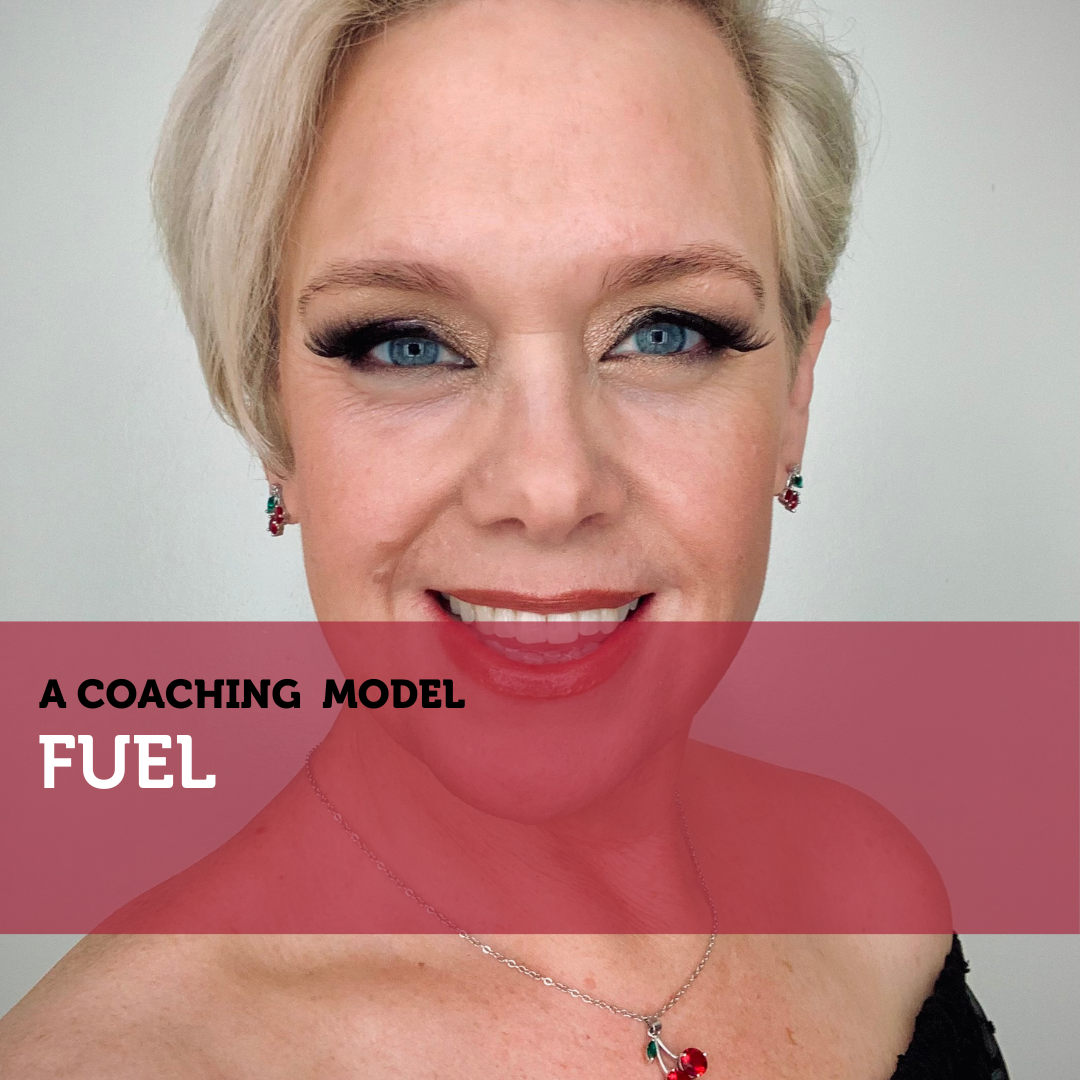A Coaching Model By Leslie Dorrans, Health & Wellness and Executive Coach, UNITED STATES
Fueling the Conversation
Discovery Phase
I absolutely enjoyed the process of selecting my coaching model over the last six months. There are quite a few well-established models to choose from and/or adapt. I tested out the CLEAR and GROW models as they seemed straightforward and uncomplicated. And while they worked fairly well for me, I realized the fit wasn’t creating enough progressive momentum for my clients. It felt more limited to the “what” and not enough attention to the “who”. After using the FUEL model with clients, I quickly discovered that this was my model. Simply, it fits my style of coaching.
I work as a coach in the personal leadership, life, and wellness areas; and I often refer to my clients’ solutions as fueling their psyches, bodies, and/or minds. I am also a big believer in personal accountability and taking complete ownership of our choices and outcomes whether they are perceived to be in our control or not. The FUEL coaching model fits in beautifully with many of my own life’s purposes and beliefs.
First developed by Kathleen Stinnett and John Zenger in the book, The Extraordinary Coach, the FUEL coaching model is based on positive psychology research, which is totally my niche and, is highly effective in creating sustainable change. It is an incredibly flexible model that can be customized to meet individuals where they are. One of the most important parts of the FUEL model, for me, is that it empowers individuals to take personal accountability for their own lives – to understand what they can and cannot control. The model also works for all sorts of topics from simple to complex.
How I Fuel with My Clients

How I interpret the FUEL coaching model for my practice:
- FRAMEthe outcomes: agreeing on expectations for the session(s) by discussing purpose, process, desired outcomes, and the importance of the topic(s) to the client. This is so critical to the process. One of my favorite quotes is, ‘Begin with the end in mind’. When the client and coach have clearly outlined expectations of the desired outcome(s) and an understanding of why the topic(s) is important to the client, helping the client map their way to what they want becomes much easier and typically leads to wins that were not even in the picture at the beginning of the session.
- UNDERSTAND the current state: this is my favorite part, helping the client understand where they currently are and encouraging them to expand on their topic(s) to make sure they are honed into all of the real issues at play. I am a believer that as human beings with eyes facing front (unlike other species who have eyes looking toward the sides), we only see 180 degrees in front of us, so to speak. This is where coaching comes in and with the help of a coach, we can begin our journey to viewing the full 360 degrees of who, what, and where we are. This step begins that process, as often, what clients come in with is just the tip of the iceberg and by seeing further, degree by degree, they have more information and can begin to make new progressive decisions with less negative effects.
- EXPLORE the possibilities: fostering a growing awareness of the ultimate goal(s) and exploring thinking outside of what has already been considered. So often clients have already created obstacles as to why they are ‘stuck’. Often these pre-recorded tracks have played over and over again for a lifetime. Through reflective questioning, clients start to explore outside of these tracks and begin to understand that only by thinking, being, or doing something new, will alternative outcomes be possible.
- LAYOUTa success path: identifying specific, actionable steps to their outcomes and the understanding of what they control in the journey. This section for success also includes milestones for follow-up. When a client has the realization that they are personally responsible for everything in their life, this is an amazing moment and can be a bit of a scary one. The power comes from the inside. Nothing on the outside can create lasting happiness, joy, or even sadness, this must be chosen from the inside. When clients understand they are the only ones who are accountable for their successes and failures, working along the path to meeting their desired outcomes becomes easier and quicker to navigate.
The FUEL Model
In conclusion, the FUEL model fits my practice extremely well. While I did not create my own, original model, I did make small tweaks to this model to fit my style. To build a strong coaching relationship, trust and rapport are essential. Clients need to feel comfortable opening up and sharing their feelings, goals, and obstacles with their coach. They need to feel there are new possibilities and solutions for their issues. Open and honest communication is the key. It allows clients to grow in their self-awareness and this is the strongest way to affect positive change. The FUEL model supports this. My clients are more empowered, motivated, and guided toward positive life and wellness changes.
Learn How to Create Your Own Coaching Model
Your Coaching Model reflects your values,
philosophies, and beliefs and must communicate who you will coach
and the problems you will solve. Read more about creating your coaching model
